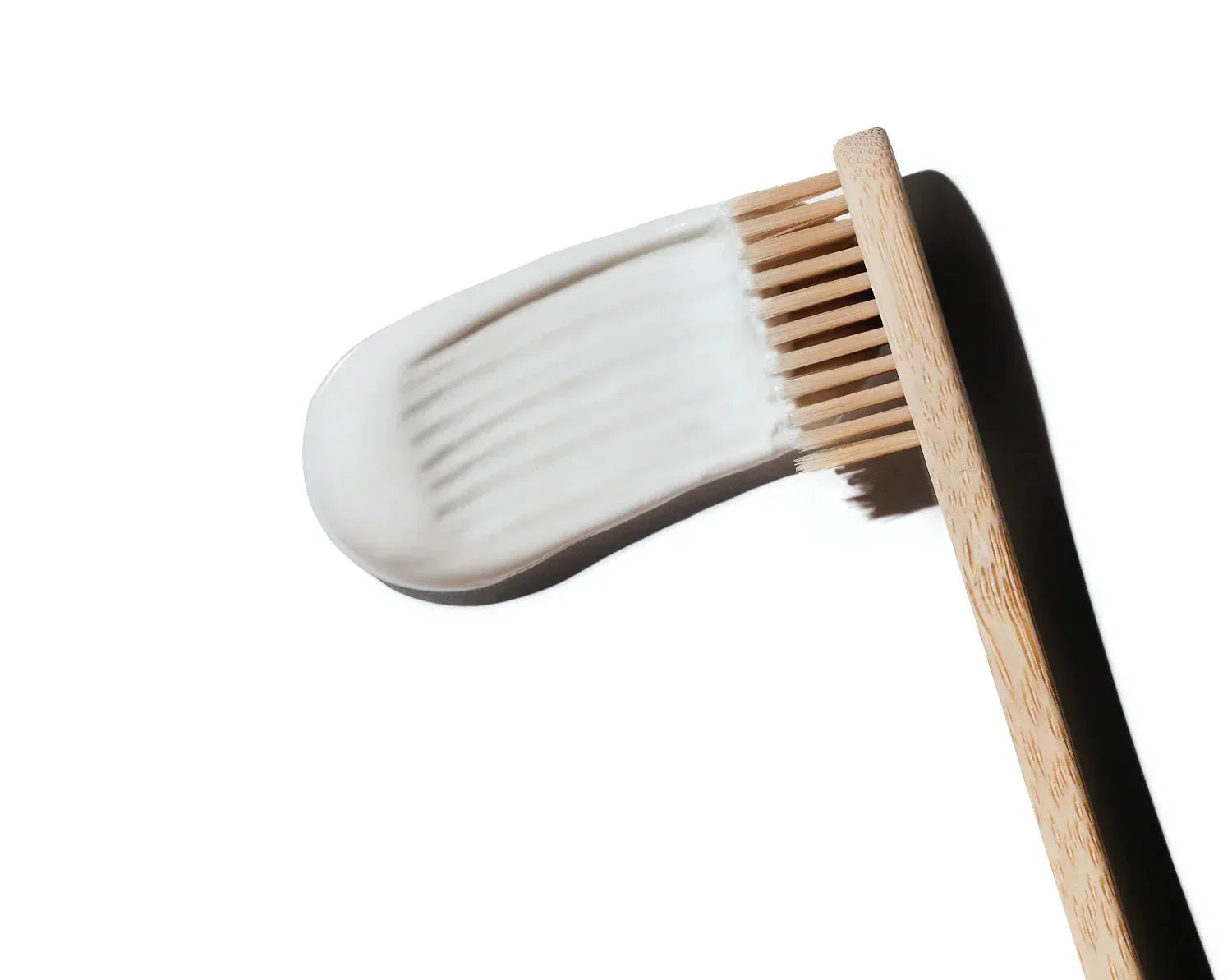Growing up, you’ve probably sat through a lecture or two about how important calcium is for strong bones and teeth. Your doctor or parents may have encouraged you to drink more milk, eat more yogurt, or take gummy vitamins. While these methods are questionable, one thing is certain...
Calcium is still important for strong teeth and bones.
The good news is....in the world of teeth, you don’t have to (and probably shouldn’t) rely on milk to provide your teeth with calcium and keep them strong, which leads us to our next point. Everyone, meet hydroxyapatite, a calcium-based mineral that makes up 97% of your enamel, 80% of your dentin, and 70% of your bones.
As a refresher, your enamel is your tooth’s outer protective shield. Over time, plaque (full of bacteria and other microorganisms) can wear down your enamel, causing tooth decay and cavities. When your enamel wears down too much, it can expose your tooth’s dentin, the layer right beneath. Your dentin contains microscopic “tubes” that lead to your tooth’s nerve center. If the dentin is exposed, you can experience pain and sensitivity since the nerve is left “exposed” to the food and drinks you consume.
But don’t worry, consider hydroxyapatite your natural, effective enamel strengthener, protecting your teeth from harm in place of fluoride....and milk!
the history of hydroxyapatite
Hydroxyapatite has an interesting history, especially for any of you captivated by space travel. The lab-produced version of the mineral is called nano-hydroxyapatite (n-HA), and it was first developed and used by NASA in 1970, since their astronauts were experiencing mineral loss in their teeth and bones in space. Lack of gravity can really take a toll on the body, but that’s an entirely different story.
Anyways, this led NASA to investigate using hydroxyapatite as a repairing ingredient, and they found that it was effective in remineralizing the astronauts’ bones and teeth. In 1978, a Japanese company, Sangi Co., Ltd., created the first commercial nano-hydroxyapatite toothpaste for the purpose of repairing tooth enamel. Since then, the ingredient and its role in the dental world have gained a lot of popularity.
These days, as more and more people are questioning the role of fluoride in toothpaste, hydroxyapatite is giving the dental superstar (fluoride) a run for its money.
the benefits of hydroxyapatite toothpaste
Because your enamel and dentin naturally consist of 80% hydroxyapatite, you probably guessed that hydroxyapatite toothpaste packs a bunch of benefits for your teeth...whether you’re an astronaut or not. For example, nano-hydroxyapatite toothpaste:
- It is non-toxic and biocompatible (safe for your body’s tissue), so no Poison Control warning!
- Effectively whitens your teeth.
- Users of hydroxyapatite toothpaste have reported that it also makes their teeth look and feel smoother, stronger, and “glossier” than other toothpastes.
- It is an excellent source of calcium.
- Reduces plaque and fights bad bacteria.
- Remineralizes your enamel...without any known side effects.
- Protects against gum disease, dental caries, and tooth sensitivity.
Because nearly 40% of people experience tooth sensitivity at some point, hydroxyapatite can offer significant relief for a lot of people. Tooth sensitivity occurs when plaque and bacteria wear down your enamel and cause your gums to recede. This exposes those “tubes” in your dentin that lead to your tooth’s nerve center.
Due to its unique ability to bind to your tooth’s enamel, nano-hydroxyapatite physically plugs the exposed tubes and actively rebuilds your enamel, relieving sensitivity. Other sensitive toothpastes use ingredients like potassium nitrate, a numbing agent that acts as a band-aid solution. This chemical ingredient temporarily numbs sensitivity, while hydroxyapatite actually addresses and repairs the problem at the source...making it one of the best long-term solutions to sensitivity!
hydroxyapatite vs. fluoride
Because fluoride has dominated the dental industry for so long, most people start to wonder...hydroxyapatite or fluoride? That’s up for you to decide, but we can point out a few key differences.
- Hydroxyapatite exists naturally in your body. Fluoride does not.
- n-HA toothpaste has proven just as effective as fluoride in remineralizing enamel.
- n-HA toothpaste is a better source of calcium than fluoride.
- Fluoride strengthens your enamel by way of saliva, while hydroxyapatite has the unique ability to bond directly to your tooth’s surface to remineralize your enamel.
- Because your teeth recognize hydroxyapatite, they can absorb it down to the core. This is not the case for fluoride.
- Ingesting “too much” fluoride is associated with numerous toxic effects, while n-HA is non-toxic.
- It can be easy to ingest “too much” fluoride because of fluoridated drinking water. This is not a concern for hydroxyapatite since it’s not added to municipal drinking water.
You might already know how the American Dental Association (ADA) feels about fluoride. In fact, the ADA will only give its Seal of Acceptance for toothpastes that contain fluoride, but with these benefits....the future of nano-hydroxyapatite toothpaste (and your smile) looks bright.







